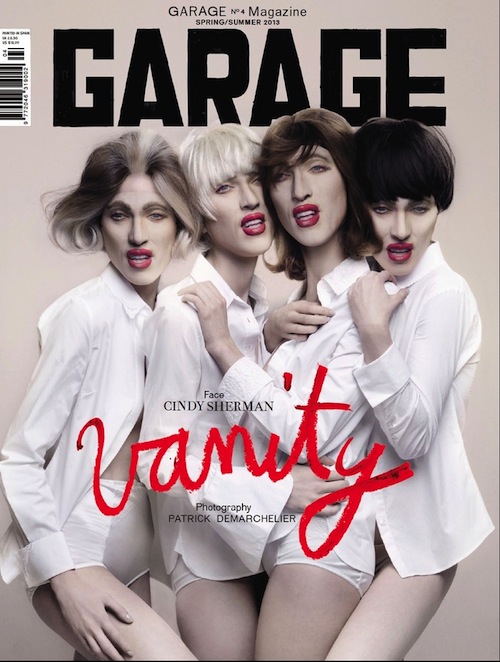In this week’s roundup, models don Cindy Sherman masks, Carrie Mae Weems’s retrospective moves to Portland, Laurie Anderson presents new multimedia work, and more.
- Cindy Sherman was the inspiration for GARAGE magazine‘s fourth issue, based on the theme of mutability of modern identity. Photographer Patrick Demarchelier shot a group of models wearing masks of Sherman’s face that were created via www.thatsmyface.com.
- Carrie Mae Weems‘s 30-year retrospective, Carrie Mae Weems: Three Decades of Photography and Video, is on view at the Portland Art Museum (Oregon). The exhibition features some of the artist’s most groundbreaking work. At the opening lecture, Weems reflected on some of the major themes in her work, including an overarching commitment to promote justice as it relates to issues of race, gender, and class.
- Laurie Anderson’s Landfall: Scenes from My New Novel premiered at the University of Maryland’s Clarice Smith Performing Arts Center, in collaboration with the equally venerated Kronos Quartet. An interview with Anderson about this new work can be found here.
- Mel Chin is one of nine artists in residence at the McColl Center for Visual Art (Charlotte, NC). Visitors can meet him at Open Studio Saturdays on February 23 and March 9. Chin’s residency with the Center ends March 26.
- Diana Al-Hadid will speak in the Pruyne Lecture Hall at Amherst College (Massachusetts) on February 21 at 4:30pm. Supported by the Rapaport Lecture in Contemporary Art Fund, the fund was established to provide support for an annual lecture by an artist, art writer, or art critic on some aspect of contemporary art. Al-Hadid’s lecture is free and open to the public.
- Kimsooja will represent South Korean at the 55th Biennale. The artist will work with curator Kim Seung-duk, director of international projects at France’s Le Consortium, to turn the pavilion itself into a work of art based on bottari, a recurring concept in Kimsooja’s work. According to GalleristNY (via Artinfo.com), “The artist’s concept of bottari as a self-contained world will be reflected in the transformation of the pavilion’s space–not physically with glass, metal, or wood, but with nonmaterial elements such as sound, light, and color.”




